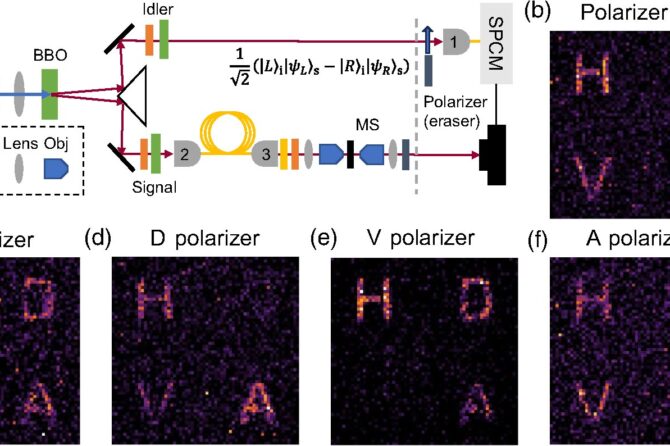Princeton researchers have discovered a surprising chiral quantum state in KV3Sb5, a material previously believed to be non-chiral. This breakthrough, published in Nature Communications and led by Professor M. Zahid Hasan, helps resolve a significant controversy in quantum physics regarding symmetry breaking in topological materials.
Chirality, or “handedness,” describes objects that differ from their mirror images. While common in nature from molecular to macroscopic scales, detecting quantum chirality in certain materials has proven challenging. The Princeton team focused on a Kagome lattice material—a structure of corner-sharing triangles named after a Japanese basket pattern—that was long considered inherently achiral.
Using an advanced scanning photocurrent microscope (SPCM), researchers detected broken symmetries within a charge density wave in the material. They employed circularly polarized light to generate photocurrent in ultra-clean quantum crystal devices cooled to extremely low temperatures (4 Kelvin). At high temperatures, the photocurrent showed no preference between right and left-handed circular light, but below the charge density wave transition temperature, it exhibited a clear handedness—a definitive signature of chirality called the circular photogalvanic effect.
This discovery marks the first time such symmetry breaking has been conclusively detected in a bulk topological quantum material. While the team confirmed the phenomenon, they acknowledge they don’t yet have a rigorous theory explaining why it occurs.
The implications extend beyond fundamental science. Chiral quantum states could potentially power new optoelectronic and photovoltaic technologies, and this research demonstrates that second-order electromagnetic measurements can detect subtle symmetry breakings in topological materials.
This work builds on a legacy of Nobel Prize-winning research on topological effects at Princeton, including contributions from Daniel Tsui and F. Duncan Haldane. Hasan’s team has been investigating novel aspects of topological quantum materials for over a decade, beginning with their 2007 discovery of the first three-dimensional topological insulator state. Their latest findings reveal that certain topological materials can host quantum states that break important symmetries and exhibit spontaneous chirality at low temperatures.
Reference: “Broken symmetries associated with a Kagome chiral charge order” by Zi-Jia Cheng, Md Shafayat Hossain, Qi Zhang, Sen Shao, Jinjin Liu, Yilin Zhao, Mohammad Yahyavi, Yu-Xiao Jiang, Jia-Xin Yin, Xian Yang, Yongkai Li, Tyler A. Cochran, Maksim Litskevich, Byunghoon Kim, Junyi Zhang, Yugui Yao, Luis Balicas, Zhiwei Wang, Guoqing Chang and M. Zahid Hasan, 22 April 2025, Nature Communications. DOI: 10.1038/s41467-025-58262-y


